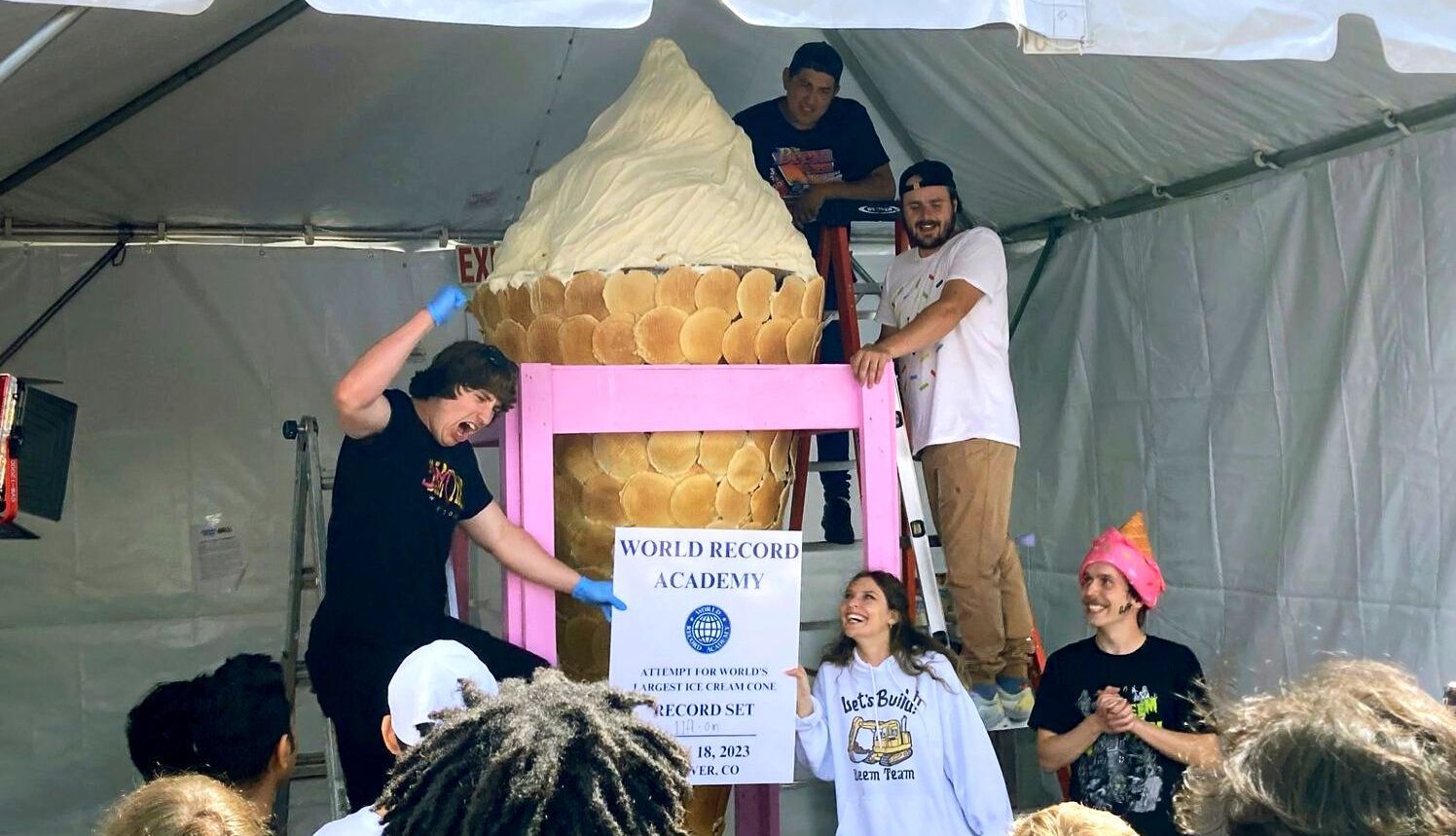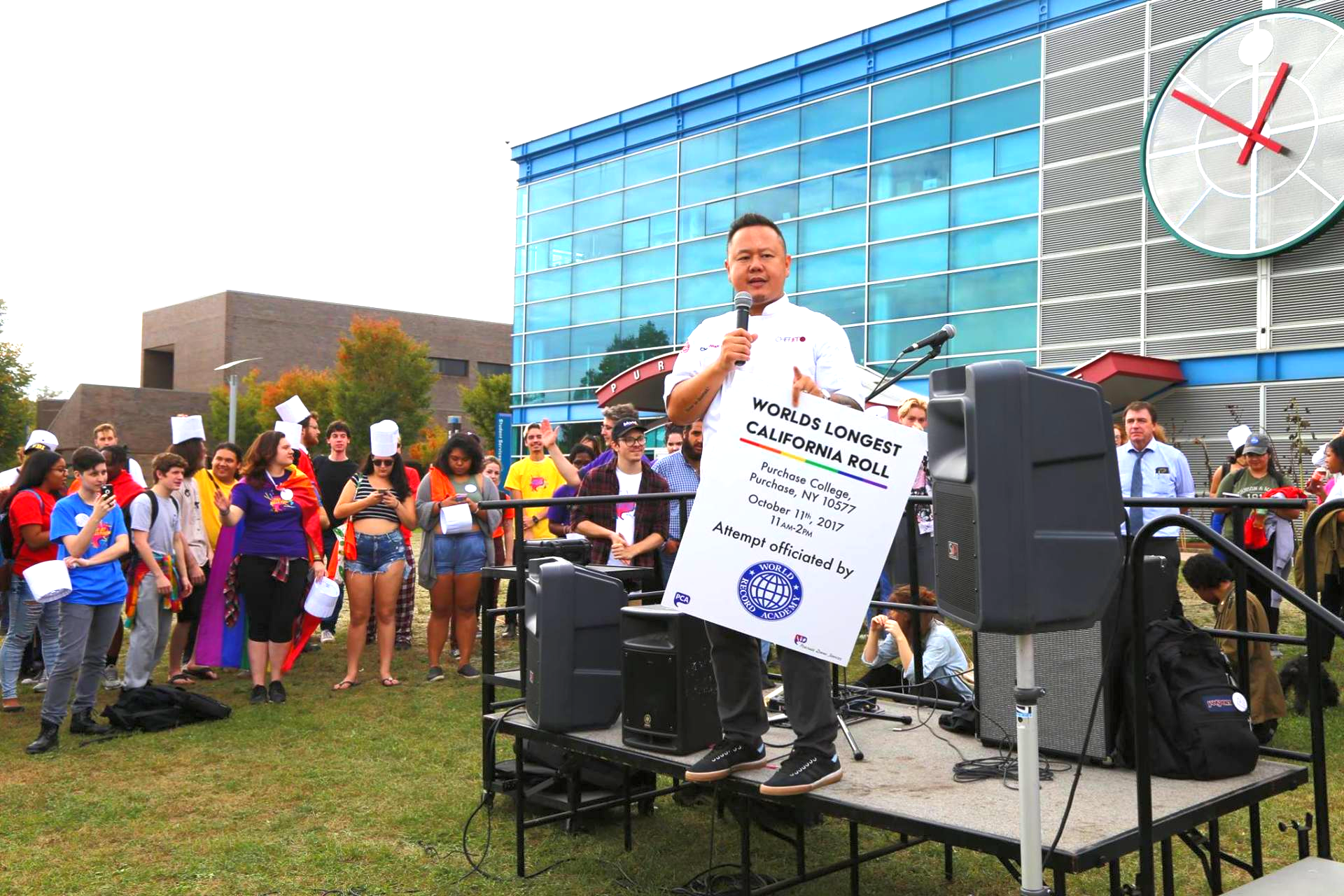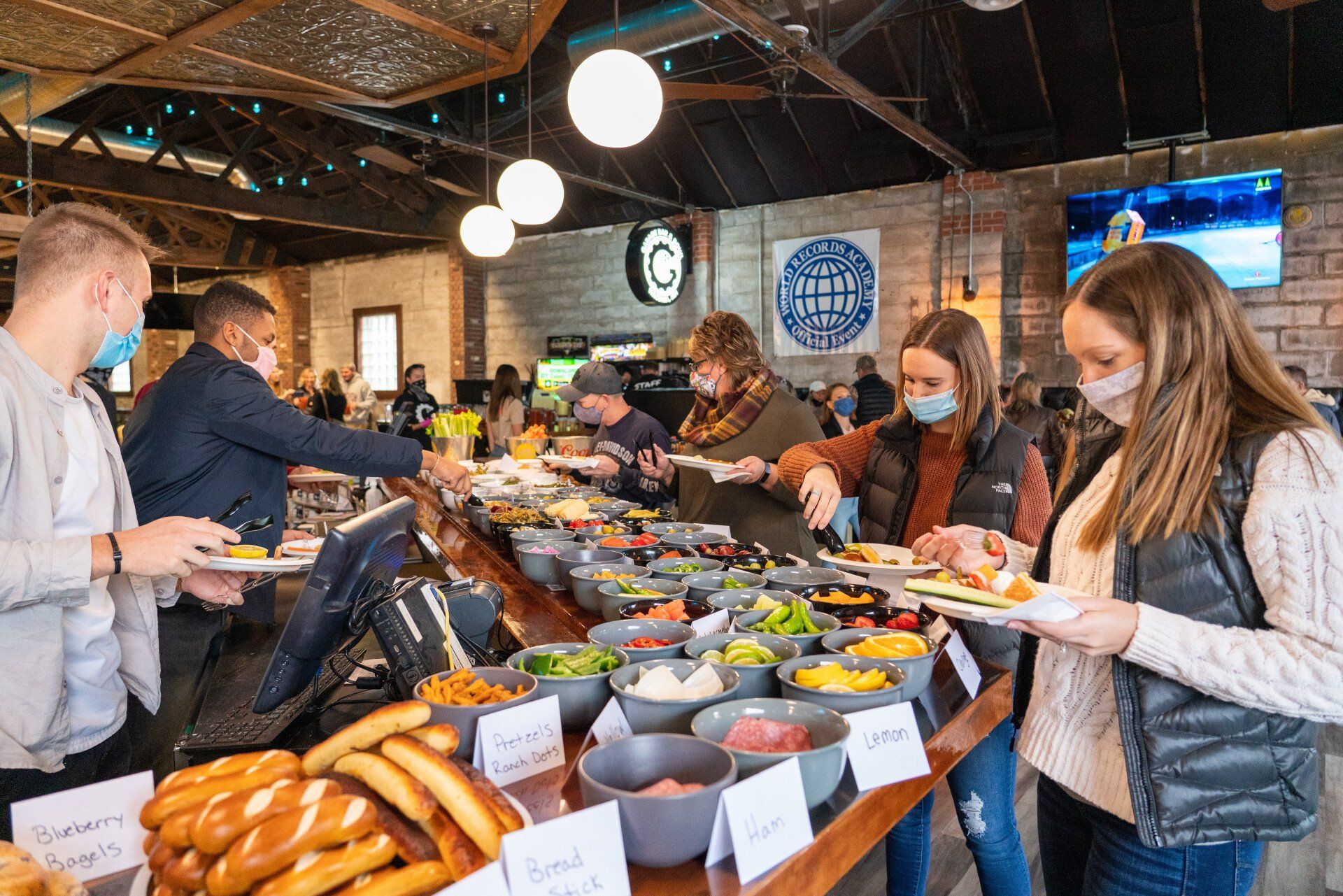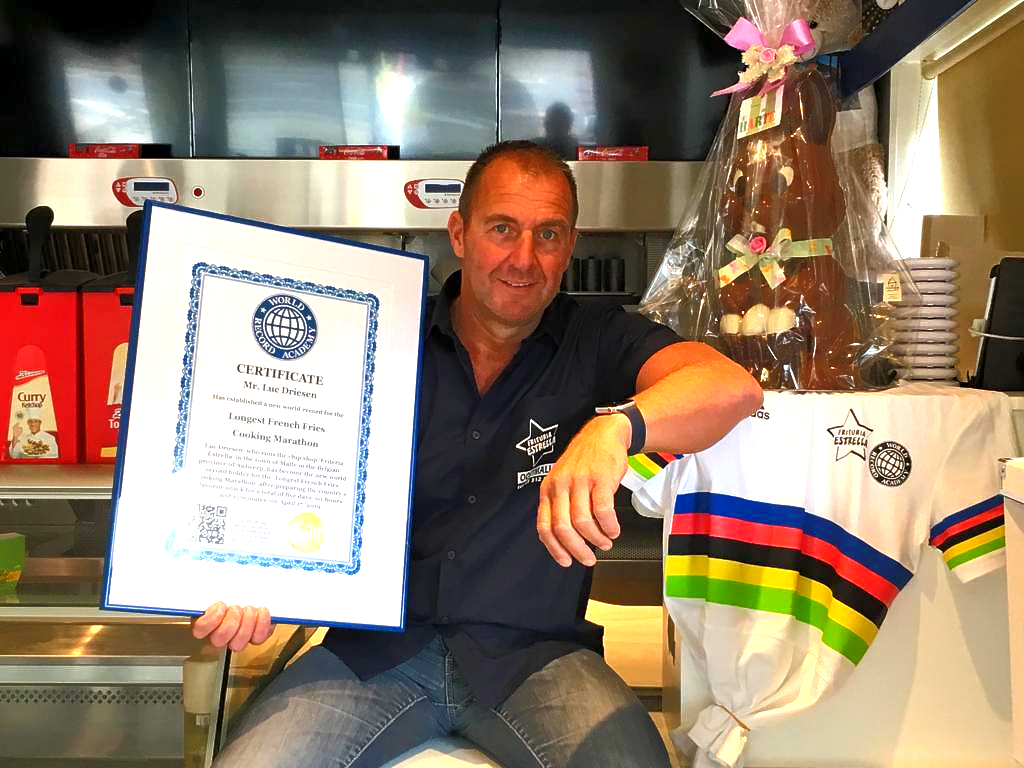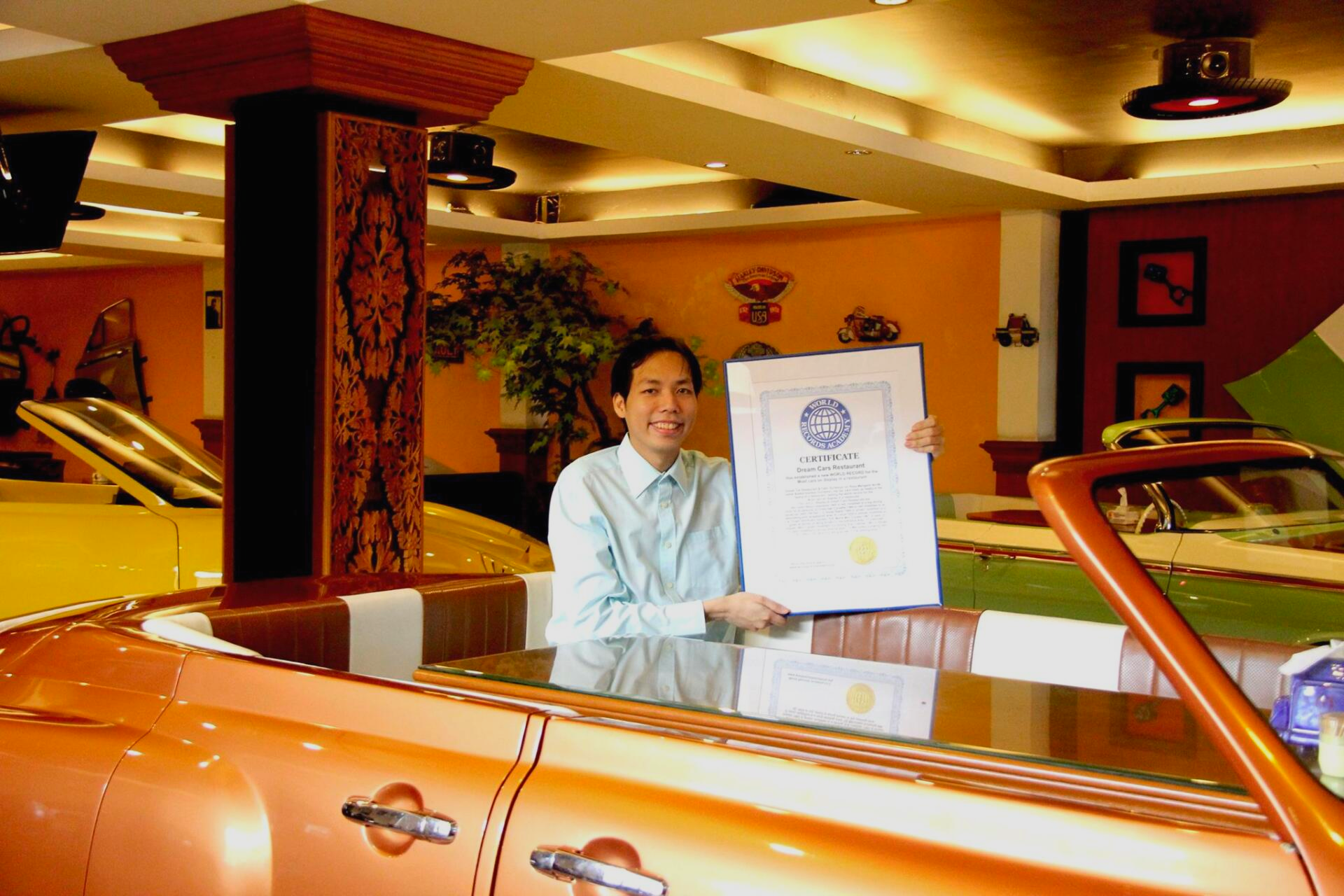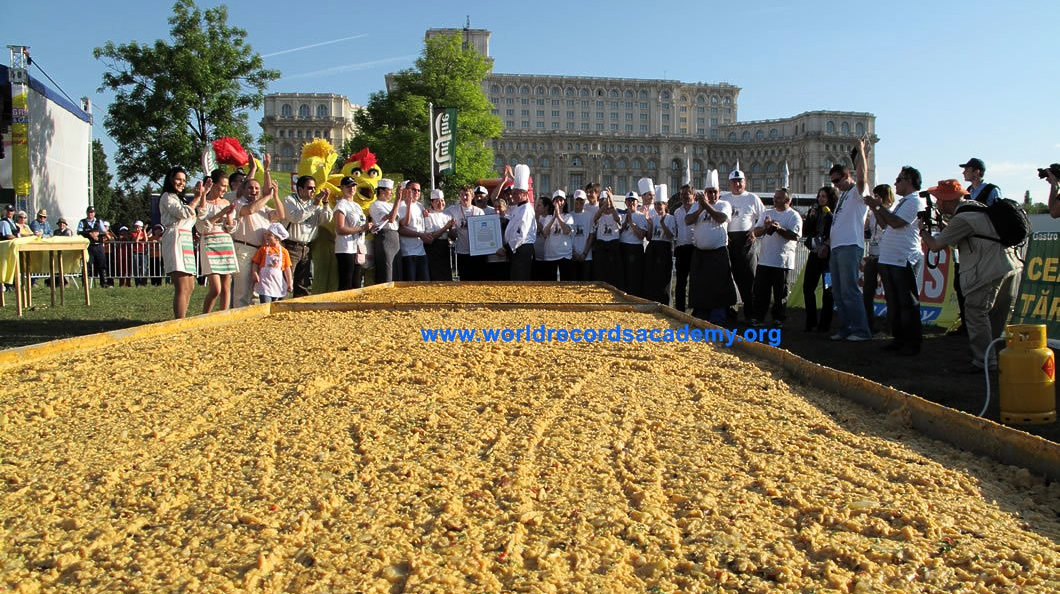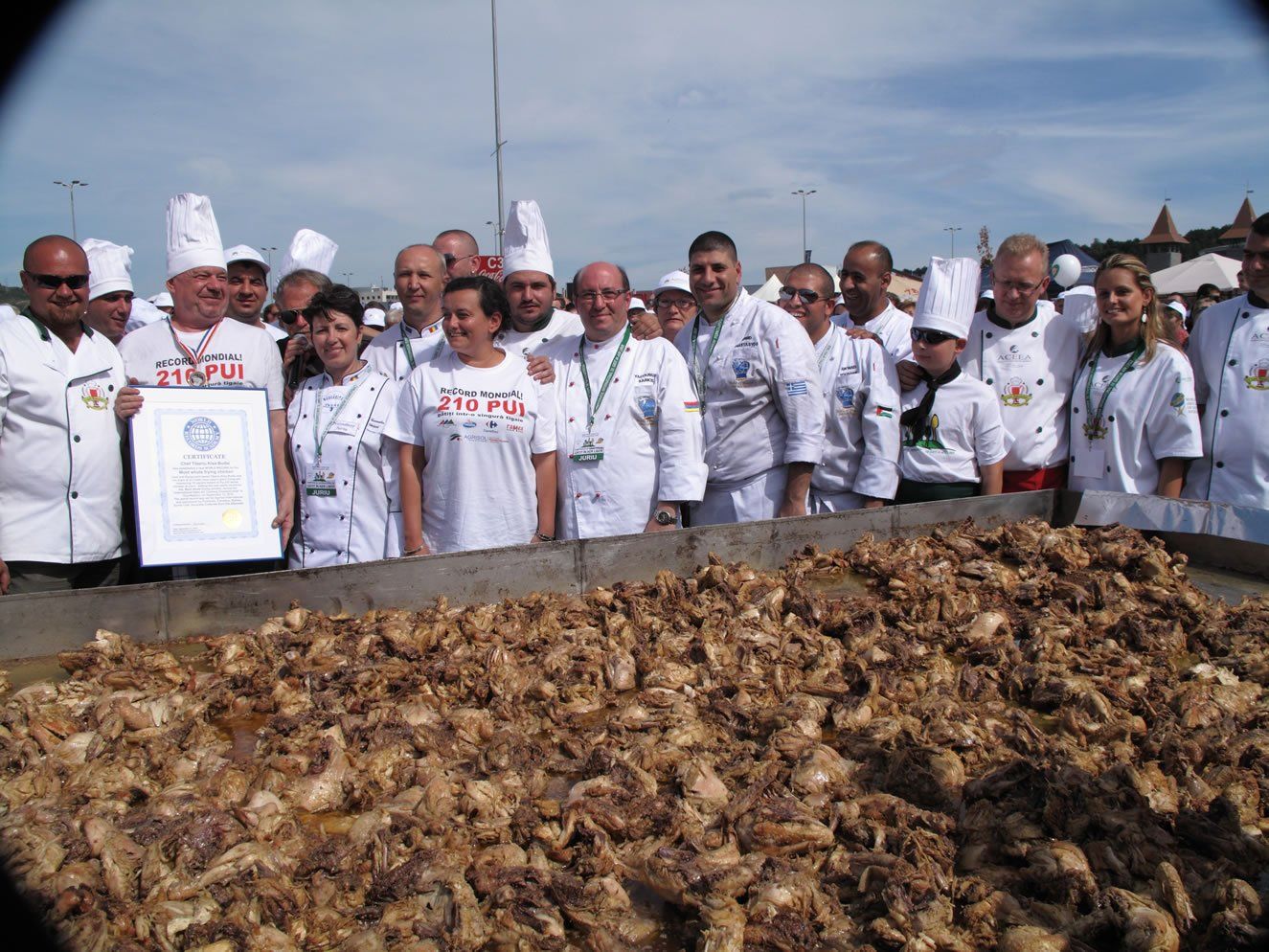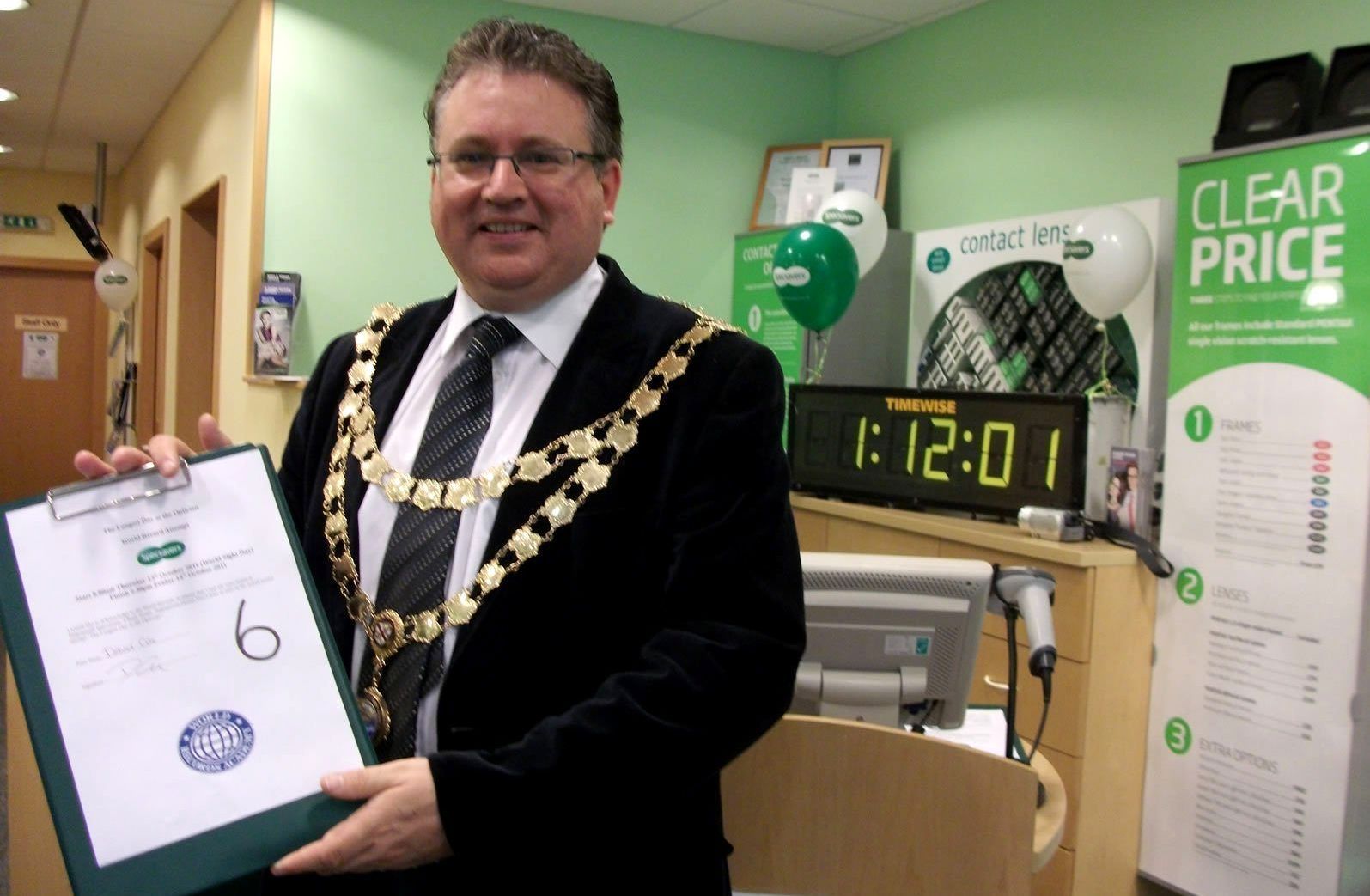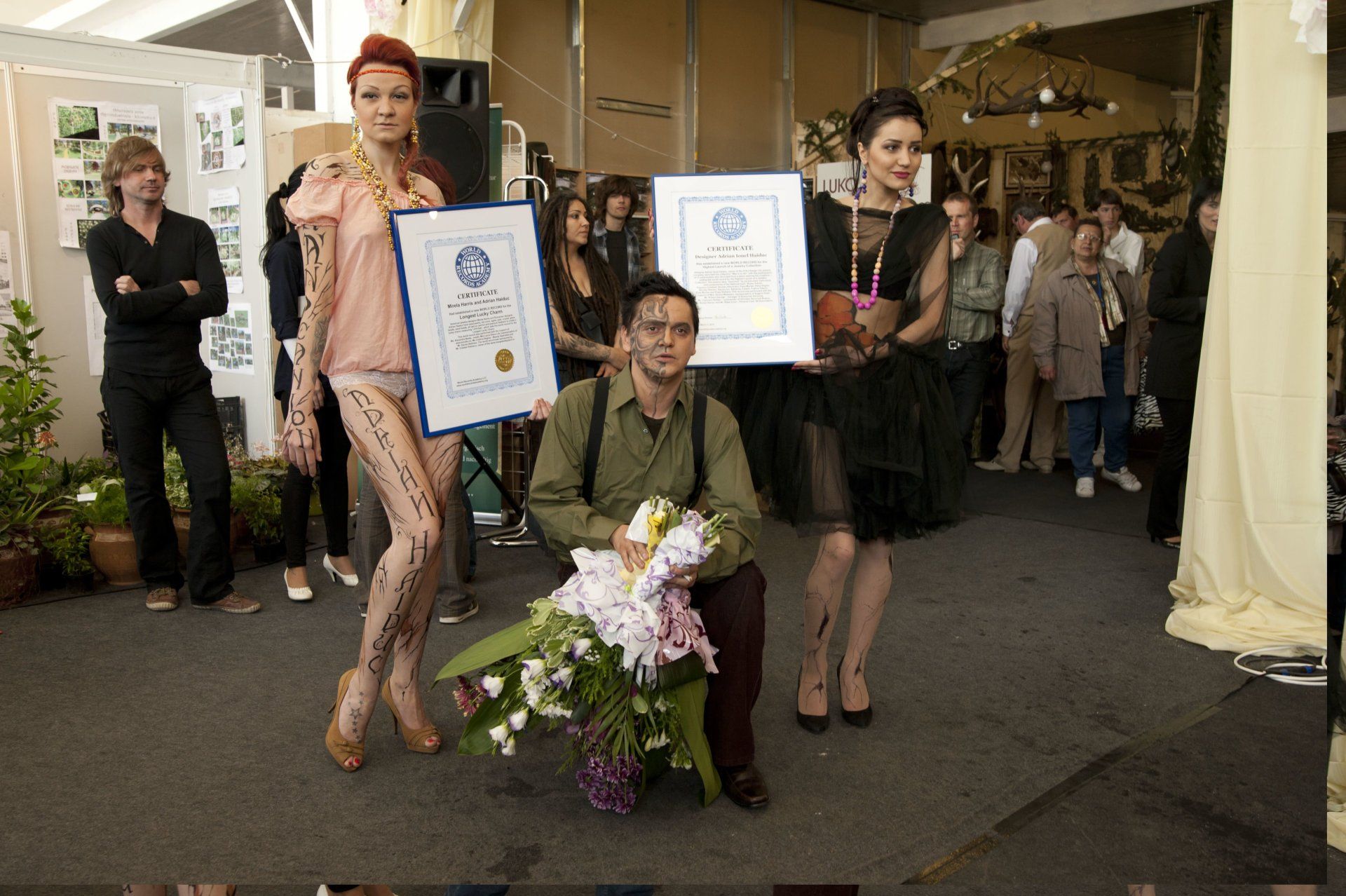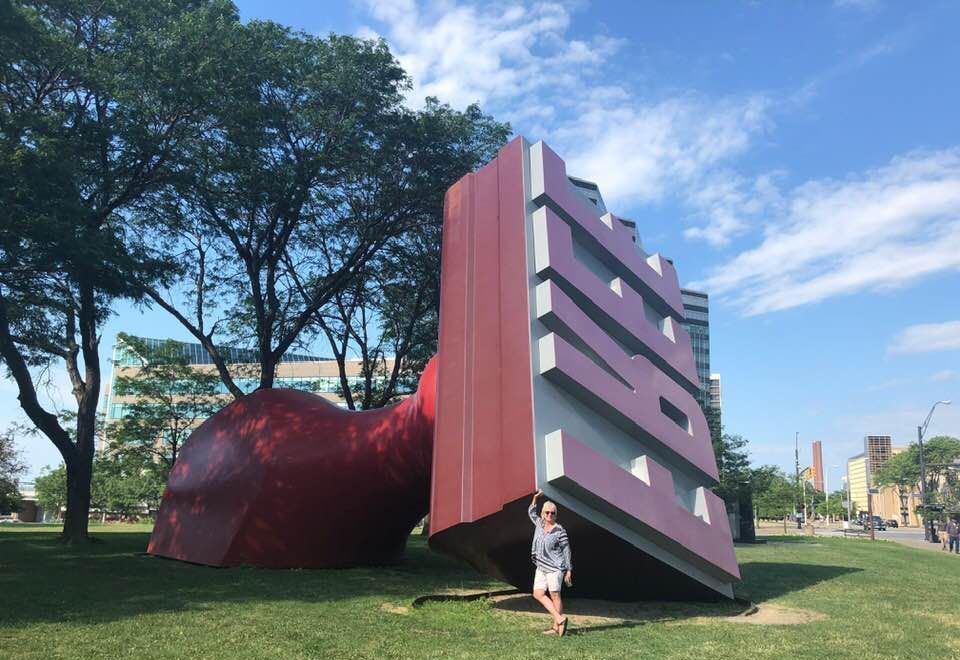World's First Diner with Walk-up Service, world record in Providence, Rhode Island
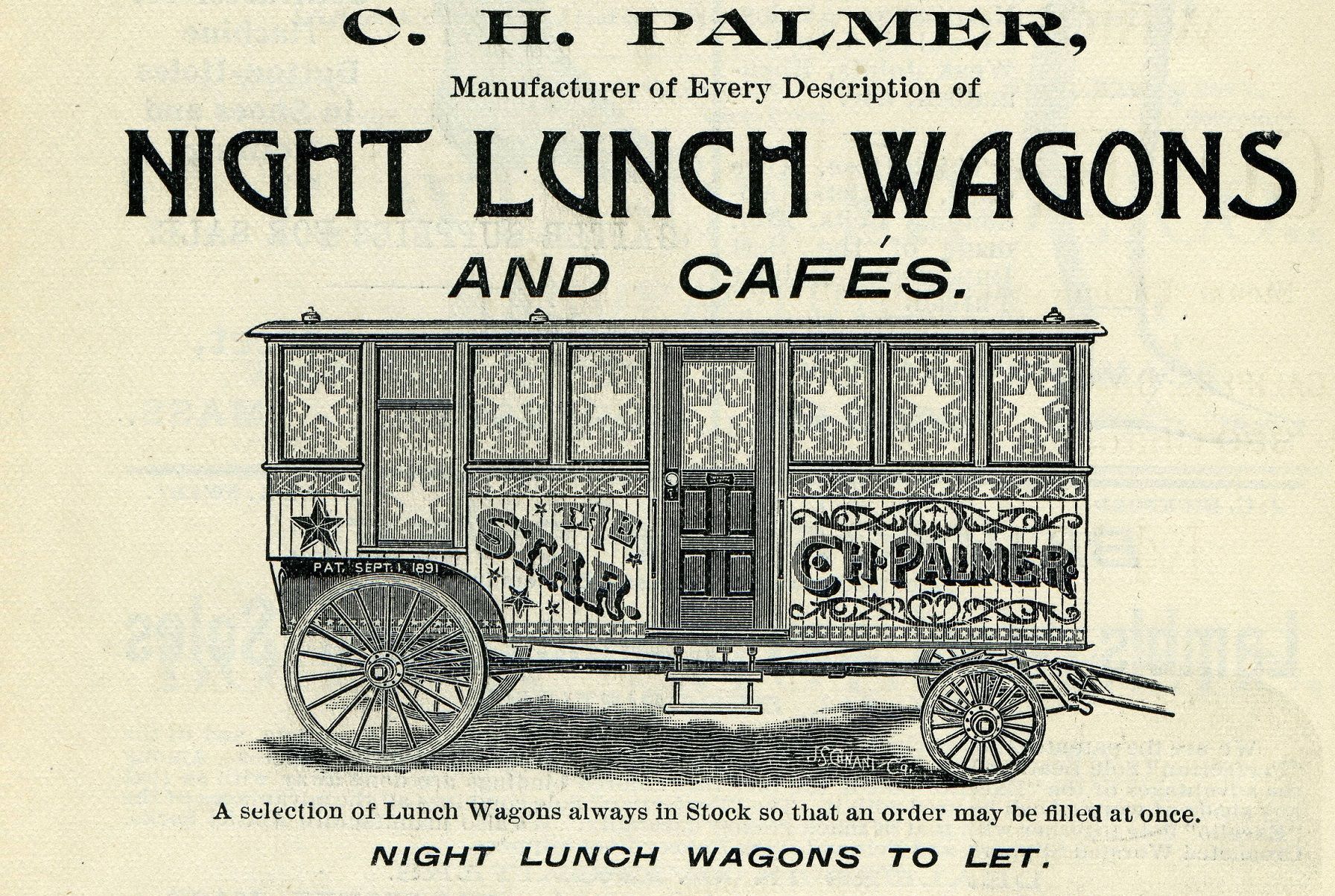
Providence, Rhode Island, United States--Walter Scott, a part-time pressman and typesetter in Providence, Rhode Island, sold food out of a horse-pulled wagon to employees of the Providence Journal, in Providence, Rhode Island; his idea sets the world record for being the
World's First Diner with Walk-up Service, according to the WORLD RECORD ACADEMY.
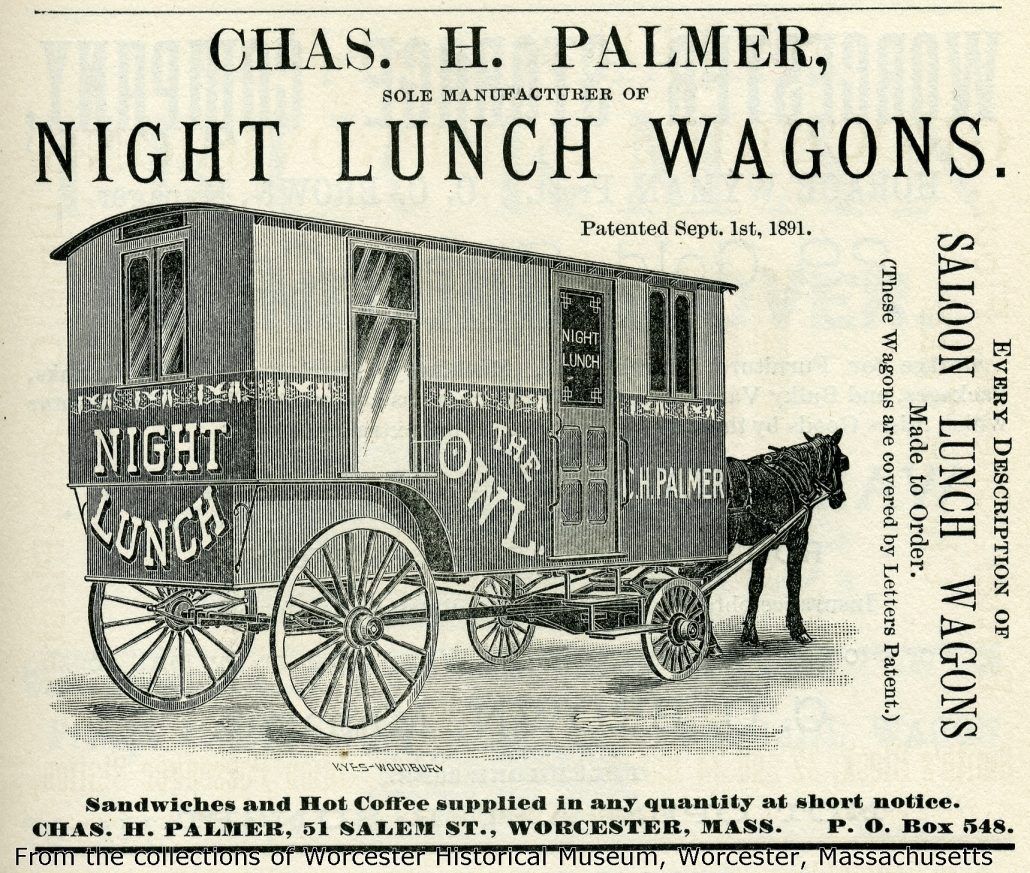
"A diner is a type of restaurant found across the United States and Canada, as well as parts of Western Europe. Diners offer a wide range of foods, mostly American cuisine, a casual atmosphere, and, characteristically, a combination of booths served by a waitstaff and a long sit-down counter with direct service, in the smallest simply by a cook. Many diners have extended hours, and some along highways and areas with significant shift work stay open for 24 hours.
"Considered quintessentially American,[3] many diners share an archetypal exterior form. Some of the earliest were converted rail dining cars, retaining their streamlined structure and interior fittings. From the 1920s to the 1940s, diners, by then commonly known as "lunch cars", were usually prefabricated in factories, like modern mobile homes, and delivered on site with only the utilities needing to be connected.
"As a result, many early diners were typically small and narrow to fit onto a rail car or truck. This small footprint also allowed them to be fitted into tiny and relatively inexpensive lots that otherwise were unable to support a larger enterprise. Diners were historically small businesses operated by the owner, with some presence of restaurant chains evolving over time." (Wikipedia)
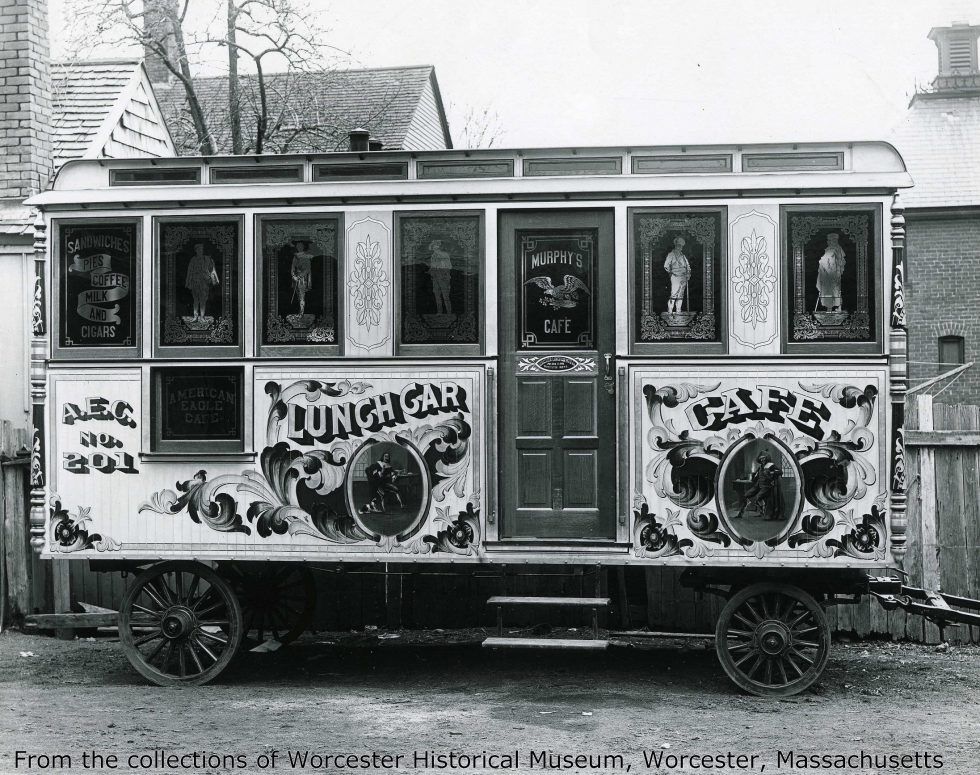
"A crude precursor of the diner was created in 1872 by Walter Scott, who sold food out of a horse-pulled wagon to employees of the Providence Journal, in Providence, Rhode Island.
"Scott's diner can be considered the first diner with walk-up service, as it had windows on each side of the wagon. Commercial production of such "lunch wagons" began in Worcester, Massachusetts, in 1887, by Thomas Buckley.
"Buckley was successful and became known for his "White House Cafe" wagons. Charles Palmer received the first patent (1893) for the diner, which he billed as a "Night-Lunch Wagon." He built his "fancy night cafes" and "night lunch wagons" in the Worcester area until 1901." (Wikipedia)
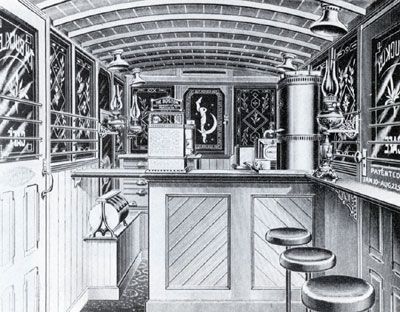
"The origins of diners trace back to Walter Scott, a part-time pressman and typesetter in Providence, Rhode Island. In 1858, at the age of 17, Scott supplemented his income by selling sandwiches and coffee from a basket to night workers at newspapers and patrons of men's club rooms," the American Dream Diner says.
"By 1872, his business had become so lucrative that Scott quit his printing job to sell food at night from a covered express wagon pulled by horses, parked in front of the Providence Journal office.
"Unknowingly, Walter Scott inspired the birth of what would become one of America's most recognized icons—the diner."
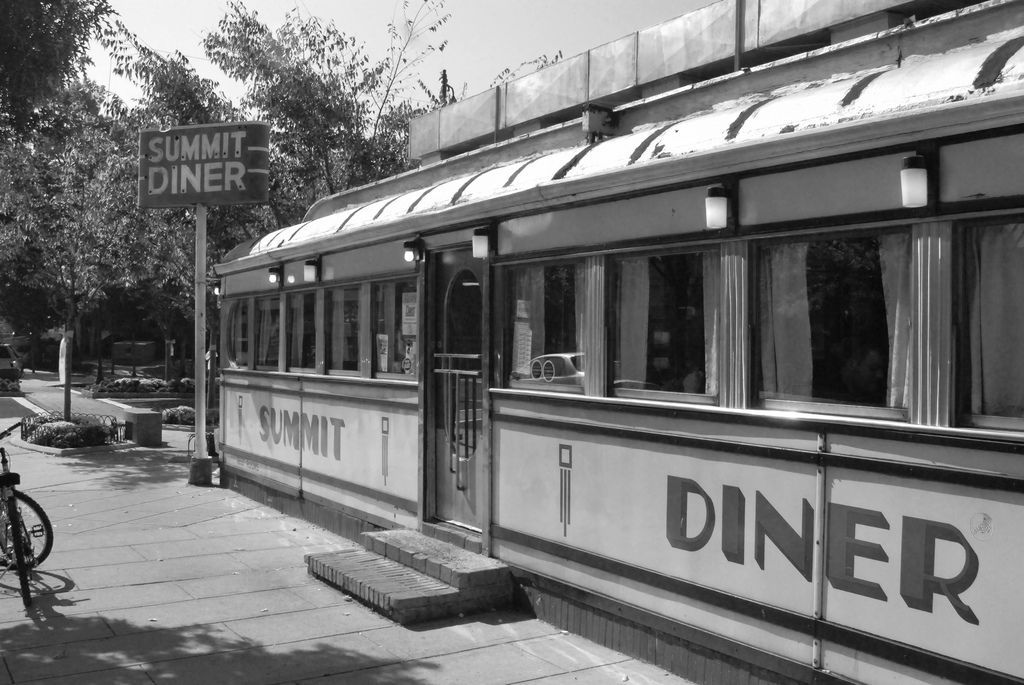
"When Walter Scott saw a need among nighttime workers downtown to eat a quick meal during their break time, he opened the first “diner” on Westminster Street in Providence, Rhode Island in 1872," the West Side Diner says.
"His invention was first called a “lunch cart” (sometimes called a Nite Owl, or a Nite Lunch). Many entrepreneurs soon copied his idea, first in Worcester, MA, and then quickly spread the concept up and down the East Coast. Over time, Scott’s idea expanded into the first "fast food" restaurants.
"By the 1940s and 50s, diners had evolved from mobile lunch wagons to full service, sit down restaurants and could be found throughout New England and beyond. They were often located where there were concentrations of factory workers and industry.
"140 years after Walter Scott’s invention began in Providence just a few blocks away, local restaurateurs Michael Arena and David Penta, owners of Amanda’s Kitchen in Pawtucket, the Lighthouse Restaurant in Johnston, and the Sea Plane Diner in Providence, will carry on the tradition with the new West Side Diner, and look forward to serving the neighborhood, city and region for years to come."
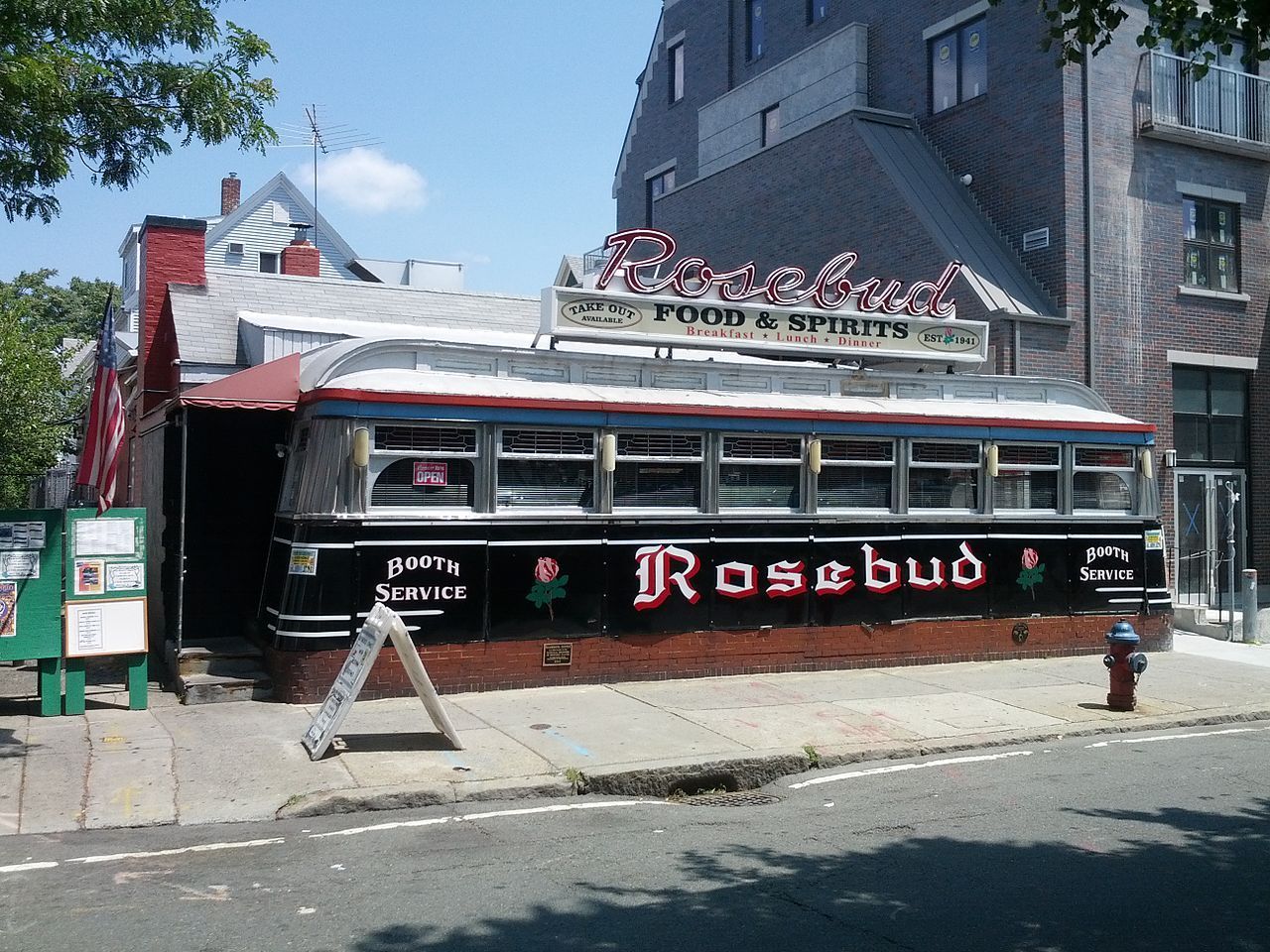
"Originally conceived by Walter Scott, the first diners didn’t look much like the buildings with chrome interiors and neon signs that we know today," the Elmira Stove Works says.
"In 1872, Scott repurposed a horse-pulled wagon into a car that served sandwiches, coffee, pies and eggs to townspeople late at night. These early ‘mobile’ diners (precursors to today’s food trucks) had large wheels, overhangs, murals and frosted glass, while later iterations had smaller wheels and larger counters.
"In 1913, Jerry Mahoney established the first stationary diner, ushering in what would eventually become “diner culture. By the 1950s, Mahoney owned 6,000 diners across the nation. As these fun restaurants gained popularity after World War II, their aesthetic took on more of the retro look most of us are familiar with, including elements such as colorful leather booths, wood paneling and porcelain tiles. Once diners spread to the suburbs, the look changed again as stainless steel exteriors, large windows and wall decor were incorporated.”
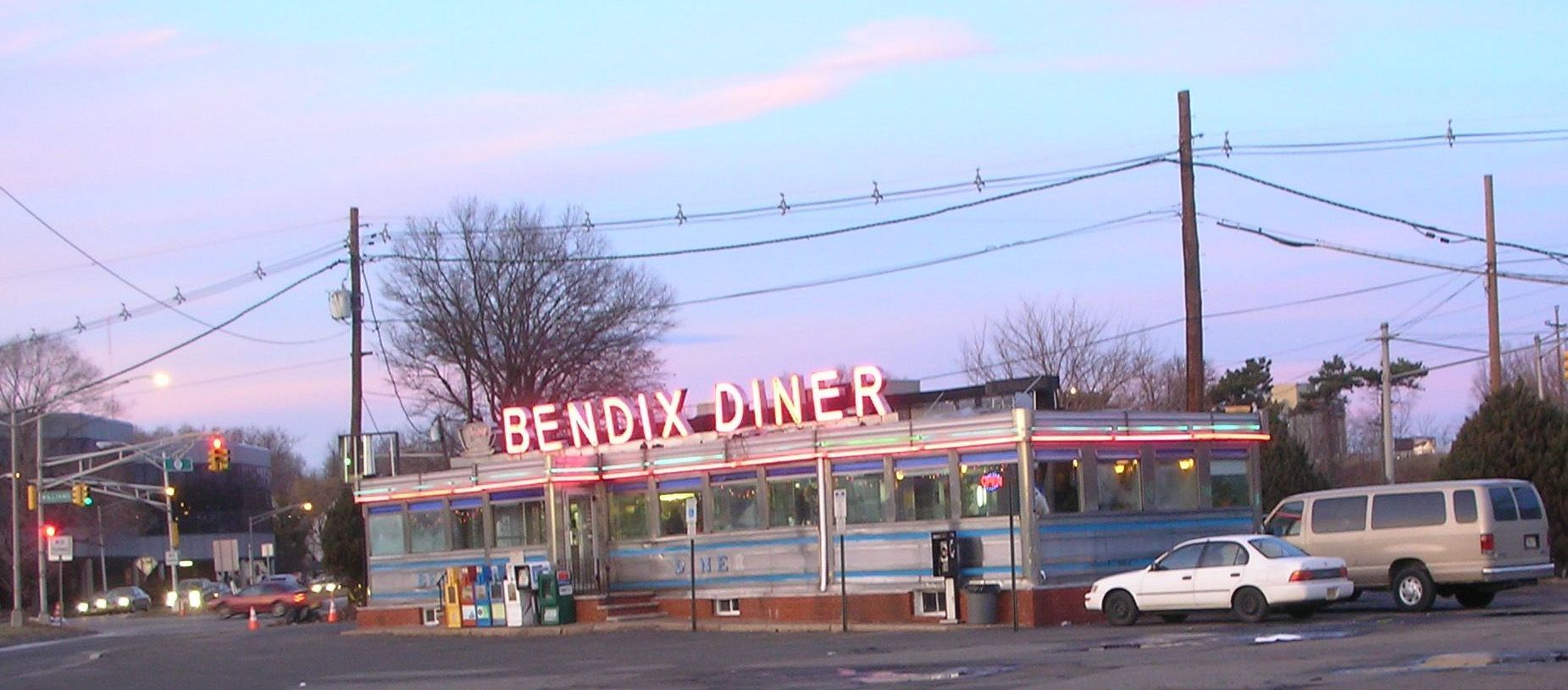
"The precursor to the diner was invented in 1872 in Providence, Rhode Island, when a man called Walter Scott began selling food from a horse-pulled wagon, later referred to as a ‘lunch wagon’. Until then, said Gabriele, “working people didn’t eat out; that was something reserved for the wealthy,” the BBC says.
"But the diner as we know it was invented by Jerry O’Mahony of Bayonne, New Jersey, who built the first stationary lunch wagon around 1913. O’Mahony formed a prefabricated diner company that would go on to build more than 2,000 diners between 1917 and 1956. As many as 20 New Jersey diner manufacturers sprung up in its wake, from the Paterson Vehicle Company to Swingle, Paramount and the Kullman Diner Car Company.
"At their peak in the 1950s, there were 6,000 New Jersey-built diners across the US (though concentrated in the north-east), a number that is closer to 2,000 today. Although the structures were simple enough to load onto trucks, they were often adorned with fancy signs and shimmering neon to attract drivers passing by."
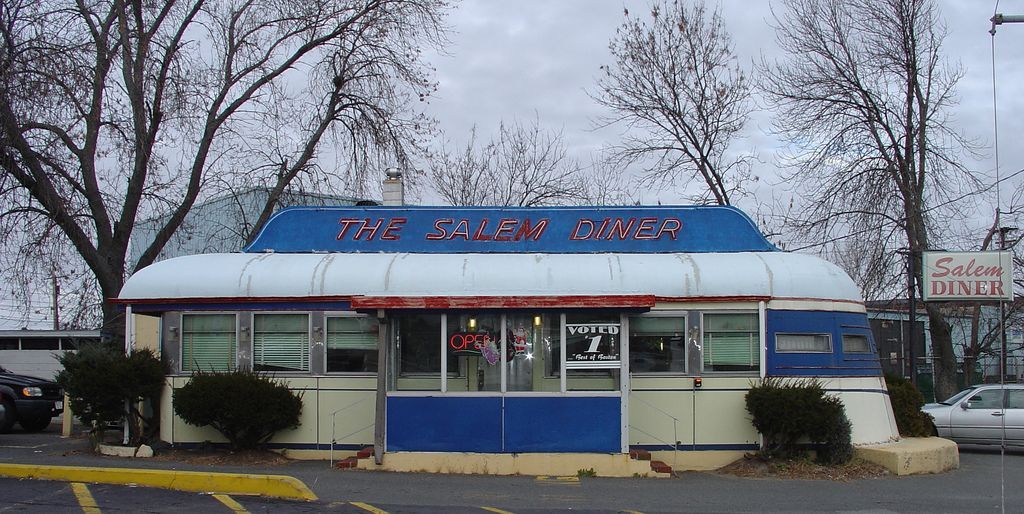
"In mid-19th-century Providence, a young man named Walter Scott, who’d been peddling newspapers, fruit, and homemade candy on the street since he was 11, realized that the folks who worked all night to put out the city’s three newspapers needed food," the Boston.com says.
"Starting small, he eventually modified a bantam freight wagon so that he could sit inside it, with a roof over his head and windows facing both the sidewalk and the street.
"One night in 1872, with his trusty horse, Patient Dick, in the traces, he pulled up in front of the Providence Journal, leaned out the window and sold a sandwich (or perhaps a cup of coffee, or a hard-boiled egg). Thus began the history of the American diner."
"Credit for the invention of the lunch wagon usually goes to one Walter Scott of Providence, Rhode Island. Scott had worked the nightshift at a local newspaper. Given that restaurants closed at 8 PM, newspaper and other night workers had no place to eat. Scott started selling snacks to the other workers, eventually pulling a small food cart around to all three Providence newspapers. In 1872, Scott quit his job and went into the food service business full time, building his first horse-drawn “night lunch wagon,” The American Business History Center says.
"From dusk until 4 AM, Scott sold ham sandwiches, boiled eggs with a slice of bread, and slices of pies (including mince and huckleberry) for a nickel each, or a full plate of chicken for thirty cents. (Those prices are not much different from today’s fast food chain offerings, if adjusted for inflation: a nickel meal then is equivalent to about $1.10 today; thirty cents equals about $7.)
"Walter Scott continued his business until 1917, but in the interim, many other lunch wagon operators arose. Scott complained that the newcomers made it hard to make a profit at a nickel, because they were giving away free onions, mustard, and ketchup."
"In 1872, a vendor named Walter Scott cut windows into a small covered wagon and parked it in front of a local newspaper office in Providence, R.I. Sitting on a box inside, he sold sandwiches with pies and coffee to journalists and pressmen working late," The New York Times Magazine says.
"“You can trace this whole industry to him,” says Richard J. S. Gutman, author of the classic study “American Diner: Then & Now” and director of the culinary arts museum at Johnson & Wales University.
"“Lunch wagons,” as food trucks were then known, soon spread. In the late 1880s, a former lunch-counter boy named Thomas H. Buckley, based in Worcester, Mass., started manufacturing his own. They came in different models: One was called the Owl; another was the White House Cafe. Many had colored windows and other noisy ornaments, as well as sinks, refrigerators and cooking stoves."
Photos: World's First Diner with Walk-up Service, world record in Providence, Rhode Island
(1) C.H. Palmer Lunch Wagon Advertisement from 1985 Provided by the Worcester Historical Museum. Photo: The Alliance for Networking Visual Culture
(2) The American Business History Center
(3) Buckley Lunch Wagon/The American Business History Center
(4) Buckley Lunch Wagon Interior/The American Business History Center
(5) The Summit Diner in Summit, NJ. Photo: Jeff Boyce/Wikipedia
(6) Rosebud Diner in Davis Square, Somerville, MA. Photo: Whistawhite/Wikimedia
(7) The Bendix Diner in Hasbrouck Heights, NJ. Founded and Built by Charles "Chip" De Lorenzo Sr. Photo: TimSPC/Wikimedia
(8) Salem Diner, Salem, Massachusetts. Photo: Ethomsen/Wikimedia
Related world records:
|
Alabama world records |
Alaska world records |
Arizona world records |
Arkansas world records |
California world records |
|
Colorado world records |
Connecticut world records |
Delaware world records |
Florida world records|
|Georgia world records | Hawaii world records| Idaho world records| Illinois world records| Indiana world records|
|Iowa world records | Kansas world records| Kentucky world records| Louisiana world records| Maine world records|
| Maryland world records| Massachusetts world records | Michigan world records | Minnesota world records |
| Mississippi world records | Missouri world records | Montana world records | Nebraska world records |
| Nevada world records | New Hampshire world records | New Jersey world records | New Mexico world records |
| New York world records | North Carolina world records | North Dakota world records | Ohio world records |
| Oklahoma world records | Oregon world records | Pennsylvania world records | Rhode Island world records |
| South Carolina world records | South Dakota world records | Tennessee world records | Texas world records |
| Utah world records | Vermont world records | Virginia world records | Washington world records |
| West Virginia world records | Wisconsin world records | Wyoming world records|
| Agriculture world records| Amazing careers world records | Arts world records |
| AMUSEMENT & THEME PARK WORLD RECORDS |
| Biggest world records | Business world records | Books world records | |
| Christmas world records | Collections world records | CATS world records | DOGS world records |
|Drinks world records | | Easter world records | Entertainment world records | FASHION world records |
|
Farming world records |
Fishing world records |
Food world records |
|
Games world records |
Green world records |
Halloween world records |
Hobbies world records|KIDS world records |
| Human Body world records | Internet world records | INVICTUS world records | JUSTICE world records |
| Mass Participation world record | Medical world records |
| Military world records | MEDICAL world records | MUSEUM world records | Modern Society world records |
|
Most Successful world records | Nature world records | New Year world records |
PET world records |
|
Religious world records | Science world records |
Skydiving world records
| Smallest world records | Sport world records | Stunts world records | Strength world records |
| Technology world records | Thanksgiving world records | Travel world records | Transport world records |
| Valentine's Day world records | Youngest world records |
| Weather world records | Wedding world records | WORLD'S FIRST world records |
